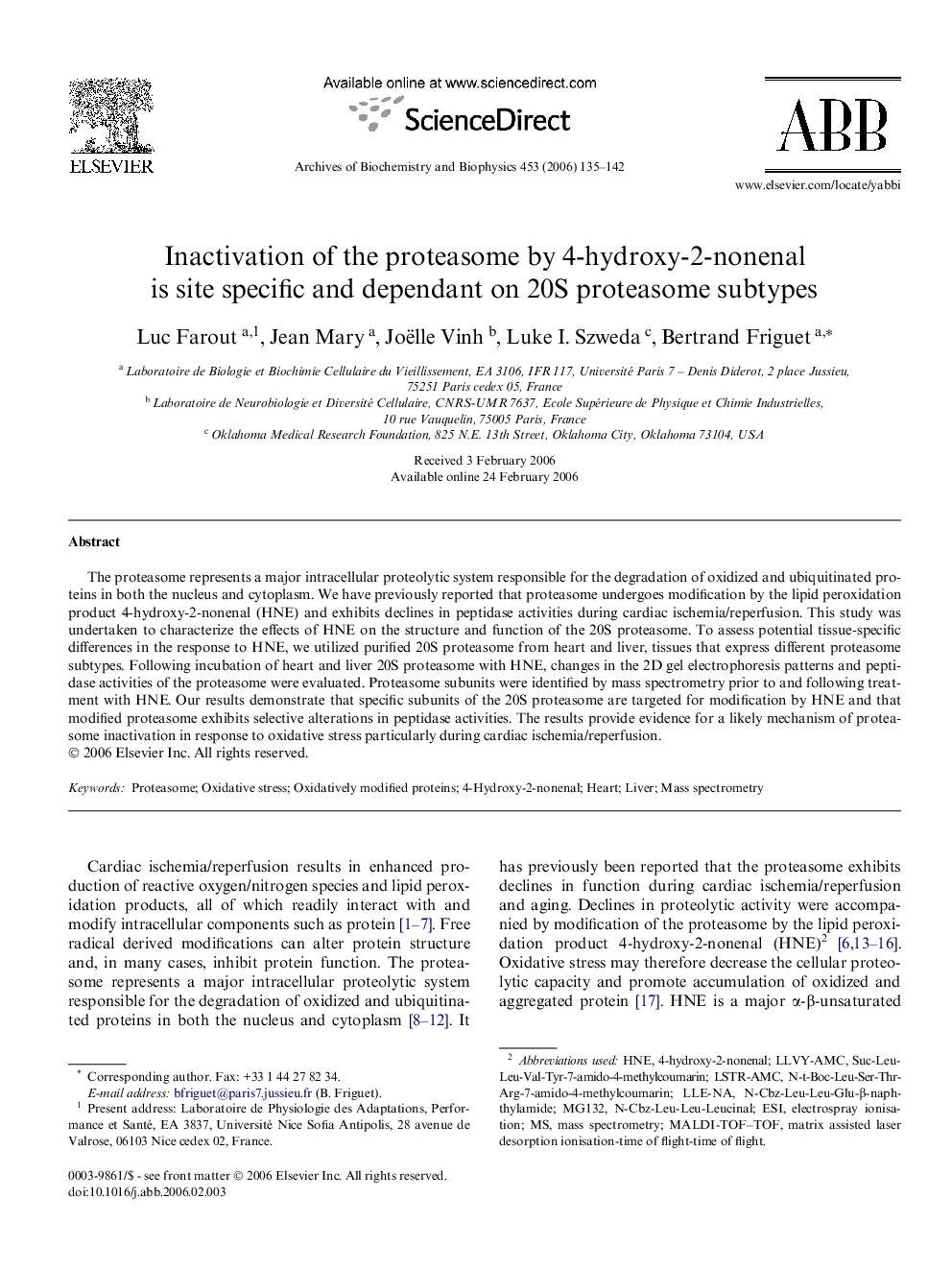| Article ID | Journal | Published Year | Pages | File Type |
|---|---|---|---|---|
| 1927445 | Archives of Biochemistry and Biophysics | 2006 | 8 Pages |
Abstract
The proteasome represents a major intracellular proteolytic system responsible for the degradation of oxidized and ubiquitinated proteins in both the nucleus and cytoplasm. We have previously reported that proteasome undergoes modification by the lipid peroxidation product 4-hydroxy-2-nonenal (HNE) and exhibits declines in peptidase activities during cardiac ischemia/reperfusion. This study was undertaken to characterize the effects of HNE on the structure and function of the 20S proteasome. To assess potential tissue-specific differences in the response to HNE, we utilized purified 20S proteasome from heart and liver, tissues that express different proteasome subtypes. Following incubation of heart and liver 20S proteasome with HNE, changes in the 2D gel electrophoresis patterns and peptidase activities of the proteasome were evaluated. Proteasome subunits were identified by mass spectrometry prior to and following treatment with HNE. Our results demonstrate that specific subunits of the 20S proteasome are targeted for modification by HNE and that modified proteasome exhibits selective alterations in peptidase activities. The results provide evidence for a likely mechanism of proteasome inactivation in response to oxidative stress particularly during cardiac ischemia/reperfusion.
Keywords
Related Topics
Life Sciences
Biochemistry, Genetics and Molecular Biology
Biochemistry
Authors
Luc Farout, Jean Mary, Joëlle Vinh, Luke I. Szweda, Bertrand Friguet,
